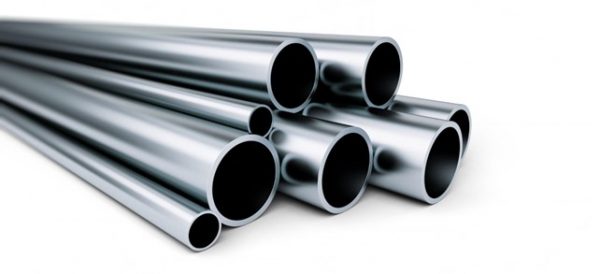BARE TUBING VS. COATED TUBING: WHICH SOLUTION FITS YOUR PLANT BEST?
16/07/2025

Choosing between bare tubing and coated tubing depends on several factors, including the operating environment, the type of fluids being conveyed, and the required maintenance frequency. In this article, we explore the key differences to help you select the system that best meets your operational needs.
Bare Tubing: Features and Applications
Bare tubing is typically manufactured in stainless steel and is widely used in environments where mechanical strength and ease of maintenance are top priorities. This type of tubing is ideal for:
High‑pressure applications, such as those found in chemical, petrochemical, or energy plants, where the tubing must ensure reliability and integrity even under extreme operating conditions.
Industrial environments in the pharmaceutical or food sectors, where contamination must be avoided and cleaning operations must be simple and effective.
Systems requiring frequent visual inspections, allowing operators to quickly assess surface conditions, detect deposits or mechanical damage, and carry out corrective actions without delay.

Coated Tubing: Advantages and Uses
Unlike bare tubing, coated tubing is equipped with an external protective layer, which can be made of materials such as PVC or urethane. This coating enhances corrosion resistance, protecting the tubing from external agents and improving overall plant safety.
Typical applications of coated tubing include:
Chemically aggressive environments, such as those containing corrosive substances, acidic vapors, or oxidizing agents.
Installations exposed to extreme weather conditions, such as outdoor plants subject to rain, snow, UV radiation, or significant temperature fluctuations.
Systems where additional protection is critical for safety and durability, particularly in contexts where leaks or tube damage could compromise production continuity or plant safety.
Industrial Tubing Differences: How to Choose
The decision between bare tubing and coated tubing is mainly based on the following technical factors:
Installation environment: in corrosive settings, coated tubing is recommended; in clean, easily inspected environments, bare tubing is preferable.
Type of fluid or gas: with aggressive or high‑temperature media, coated tubing ensures greater reliability.
Maintenance and durability: coated tubing requires less maintenance; bare tubing is best when frequent inspections are necessary.
Tubing Bundles: An Intermediate Solution
Tubing bundles are an efficient technical alternative. These are pre‑assembled systems where multiple tubes are grouped within a single protective jacket, which may be thermally insulated or resistant to chemicals. This configuration is particularly useful in complex plants where it is essential to protect multiple lines at once, reduce installation time, and simplify future maintenance. The individual tubes within a bundle can be either bare or coated, depending on the specific project requirements.
In Conclusion
Selecting the right tubing for your plant requires a thorough assessment of operating conditions and specific technical needs. Whether you choose bare tubing, coated tubing, or a multi‑tube bundle solution, the decision should be based on environment, maintenance, and expected service life.
Hai qualche domanda?
Fornitori materiale meccanico, elettrostrumentale ed elettrico per impianti industriali del settore chimico e petrolchimico e dei settori energetici
